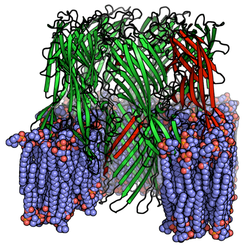Interfaces and Freezer Proteins
Tobias Weidner, group leader at the Max Planck Institute for Polymer Research, received the Early Career Investigation Award from the Biomaterial Interface Division of the AVS Society . He received the award at the AVS 60th International Symposium, which was held in Long Beach, CA, USA from October 27 to November 1, 2013. Weidner’s research focus is on biological macromolecules, mainly proteins. He is a physicist and with his group of biologists, chemists and biochemists he studies the structure and dynamics of biomolecules. Weidner uses spectroscopic methods to determine the shape and folding of protein structures and how proteins interact with their environment. Weidner’s experiments use short laser pulses with durations of less than a trillionth of a second, to provide a stroboscopic picture of very fast microscopic motions of molecules. One important focus is biomineralisation, the formation of bone, teeth and corals. Nature uses proteins as crystal engineers to grow crystals with precision.
Apart from the mineral synthesis, proteins are also capable of manipulating interfaces. They can destroy cell walls or reinforce them. Cell toxins are very complex protein structures and used by bacteria to attack human cells. They may also be the backbone of a new generation of medical applications. How? Weidner is looking for the answers at the atomic level.

Another example of protein control are ice-seeding proteins. While this topic was not really in the focus of Weidner’s research interests, he was inspired by a talk given by atmospheric scientist Ulrich Pöschl (MPI for Chemistry) who described the impact of proteins and bacteria on the global climate. Together with Janine Fröhlich (MPI for Chemistry) Weidner and Pöschl decided to study the underlying molecular processes. The experiments revealed that ice-seeding proteins are able to slow down surrounding water molecules. The announcement of the talk at the AVS Symposium alone attracted media attention. Weidner’s next research project will focus on how ice-seeding proteins fold to capture water molecules and lock them in place to grow ice crystals.












